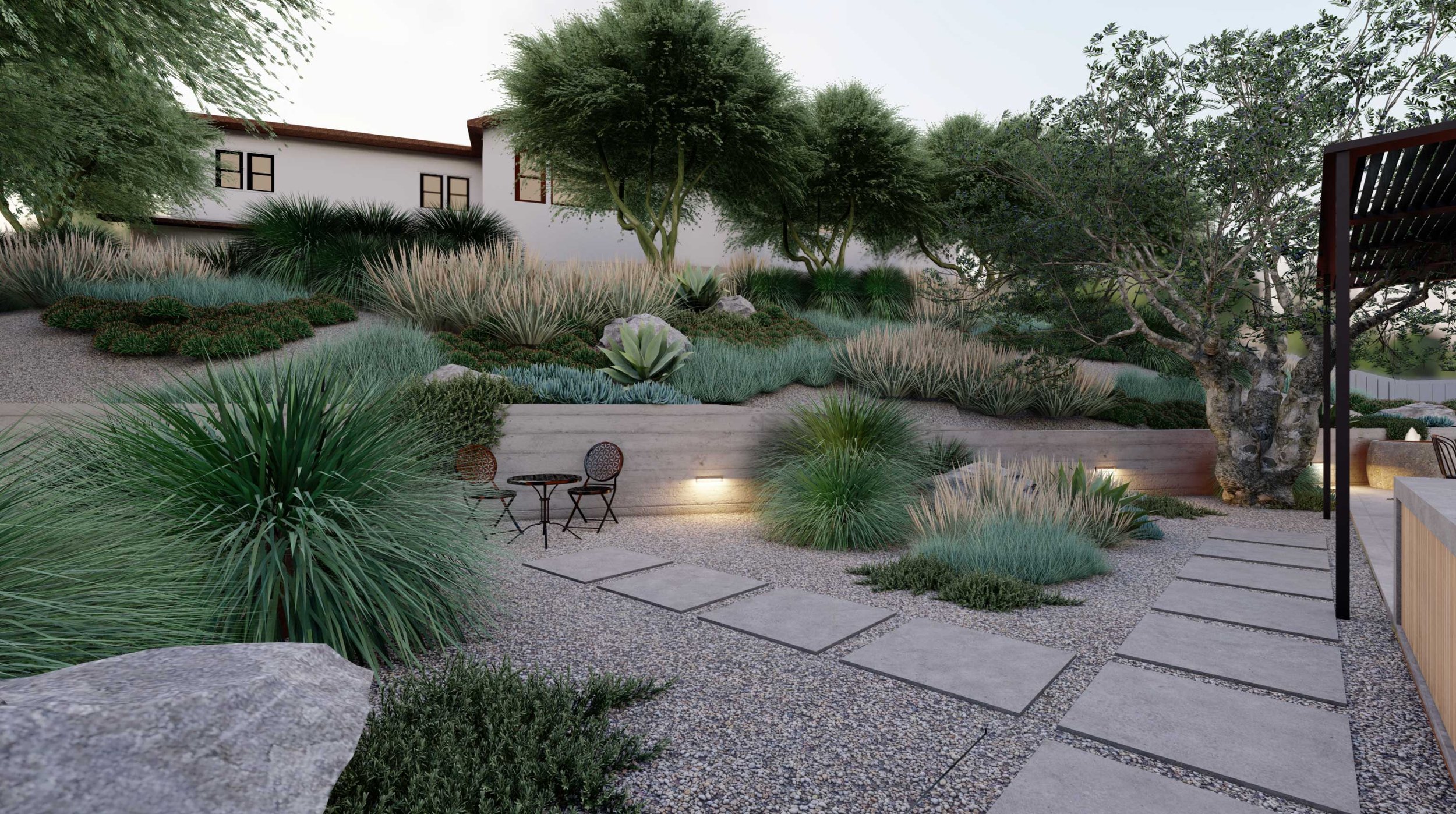What Does Landscapers Do?
What Does Landscapers Do?
Blog Article
Fascination About Landscapers
Table of ContentsNot known Facts About Landscapers10 Easy Facts About Landscapers ExplainedThe smart Trick of Landscapers That Nobody is DiscussingGetting My Landscapers To WorkSome Known Factual Statements About Landscapers 6 Easy Facts About Landscapers Shown
- A garden function where water is stood for by an aggregate stone product, generally a gravel or granite.- A stone or natural flagstone patio, course, or sidewalk built without a concrete base.- A stone maintaining or totally free standing wall constructed without making use of mortar. A very proficient mason is needed for a dry stack stone wall surface. Many wall surfaces in Portland are not dry piled, even if they show up to be. - An underground structure that accumulate water and enables it to reduce percolate right into the soil around it.
Landscape style that is suitable with a sites' setting in both appearance and sustainability without unfavorable impacts to the setting. Bordering in the landscape is a line of separation that produces aesthetic interest in the garden by dividing one sector from another section.
Locations can additionally sense of "enclosure" given by trees, various other growings, fencings, or screens. The landscape near the access to a building. A tree, bush or creeping plant, educated to grow on a wall or fence right into a particular pattern. Specifically helpful for fruit trees, making it simple to collect the fruit and consisting of mess.
The Best Strategy To Use For Landscapers
:max_bytes(150000):strip_icc()/GettyImages-154046398-c39f1daf45a84601b328d78ed8630660.jpg)
The element in a landscape style or area in a landscape that is meant to be most famous. The focal factor can be a plant, rock, sculpture, collecting space, or various other landscape function. A style of yards or garden elements that emphasize straight lines, ideal angles and circles. Shrubs or bushes situated in beds near the foundation of a home or various other structure.

Little Known Questions About Landscapers.
Rock item, either rounded or fractured, that is relatively small- generally 1" or less. Reduced plants that are enabled or motivated to spread out over a location. Can describe any kind of "difficult" garden elements consisting of statuary or stones but the majority of frequently is made more information use of to refer to courses, patio areas, and walls.: Height difference between the level of water in a pond (or the degree of the pump if it rests outside the fish pond) and content the upper outlet of water which impacts efficiency of the water pump in gph (gallons per hour). Dense bushes or trees that develop a fence, display, or border.
Fence boards that run horizontally, commonly utilized in modern-day or Japanese-inspired landscape styles. Appropriate usage of fictional lines can assist the landscape really feel connected to the home and other components.
Conventional PNW landscapes are casual. A plant that spreads out even more than desired, or right into environments where it does damages.
The Basic Principles Of Landscapers
Can include head positionings and insurance coverage, pipeline sizing, GPM specs, and products needed to install this system. Licensed specialist that designs landscapes, schooled in design and architecture as well as in cultivation.
The specialist who plans and establishes landscape tasks, usually at a domestic or little industrial level with the major design impetus on growings. Landscape designers commonly have less education than Landscape Architects and are not licensed. A finished landscape design, outlining all components for the new landscape. This usually takes the form of an illustration theoretically.
Making use of lots of growings of the exact same selection to fill in a location in the landscape. This can reduce upkeep and water usage in the yard.
A mix of cement, sand, and water that is utilized in stone stonework from this source for setting rocks and joints. A layer of compost or bark dirt used at the base of a plant. A mass planting of moss. A plant that existed in a geographic area before people started transforming the landscape.
The Best Strategy To Use For Landscapers
Just how the yard or a yard element is set up in relationship to an existing or brand-new function or to an instructions. Turfs that are not mowed but grown in landscapes as perennials.

Plants that offer seasonal passion and after that pass away back in the winter months. Cold period lawn that is the most usual lawn lawn in Portland, OR and the rest of the PNW.An open roofed framework over an outdoor patio or other landscape feature.
Lava aggregate ranging in size from 1/4" down to dust. One of the most typical landscape gravel in the PNW. Area of the landscape made to deal with rainfall water up until it can soak right into the ground. A chain that regulates water as it takes a trip from a roofing system seamless gutter to the ground. Garden framework that creates a growing location that is consisted of and more than the surrounding quality.
Framework made from wood, concrete, leading rocks, blocks or various other materials for supporting inclines and avoiding too much erosion. Slim watercourse. Creating a garden function being composed mostly of stones with growings that match and can prosper in the rocky setting. Lawn sprinkler head design that rotates a stream of water across an area.
A Biased View of Landscapers

Report this page